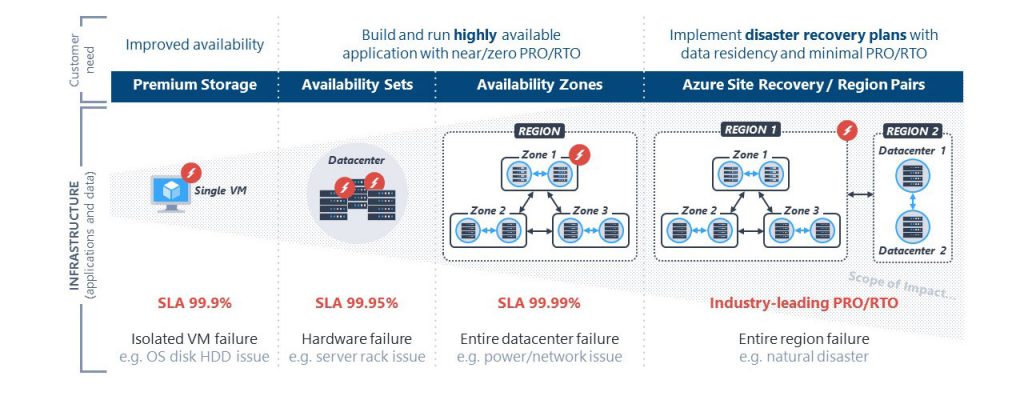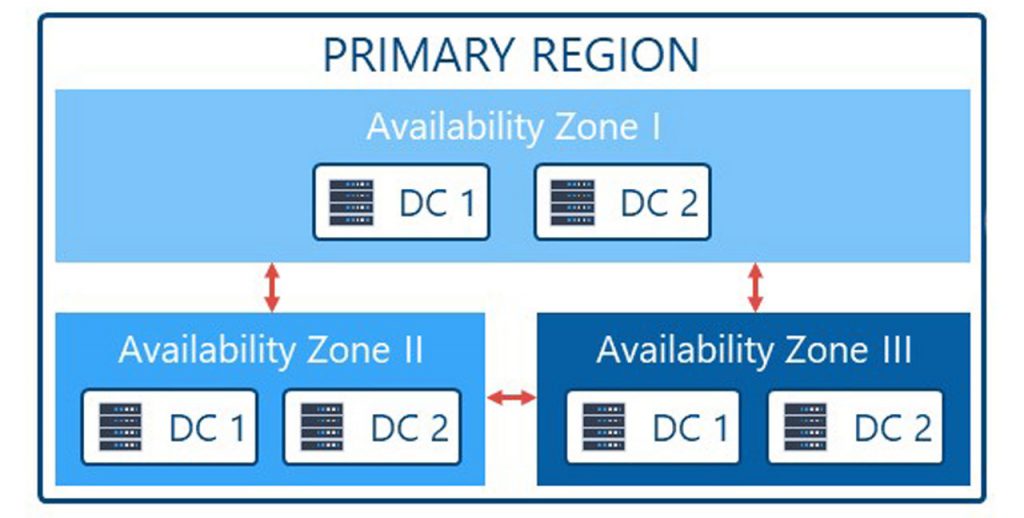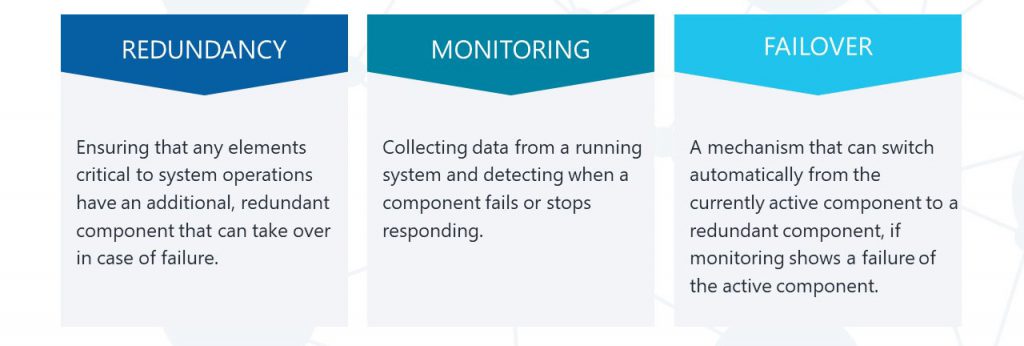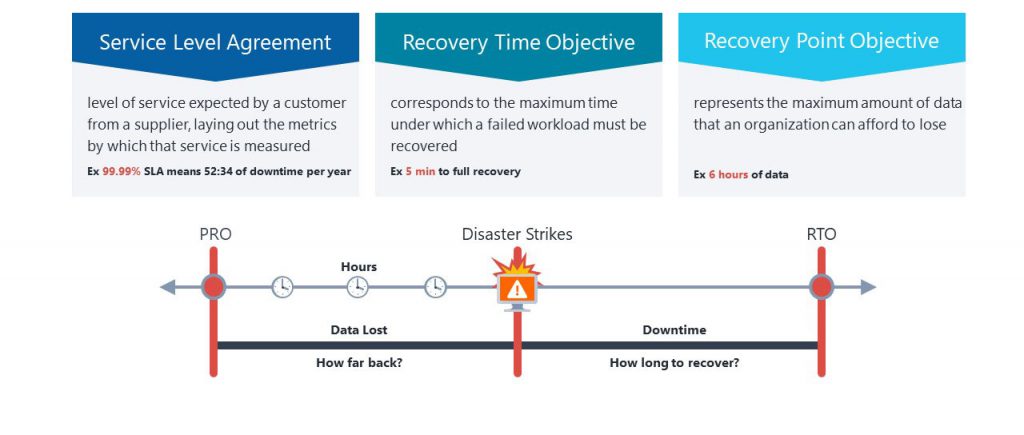Microsoft Azure has security and reliability built into its core. It is one of the reasons that so many businesses migrate and trust their mission-critical systems and data to Azure. However, functionality alone isn’t enough to drive the best results for Azure users. It’s critical that organizations using Microsoft Azure get the right tools, information, and training to create and manage Azure with confidence in its reliability.
A 2019 report revealed that Microsoft Azure delivered “an average uptime of 99.995% for its core compute services” (Cloud Wars, 2019). Azure’s users rely on this level of availability, but achieving this is not a guarantee.
It is important to recognize that the reliability of services built on top of Microsoft Azure is a responsibility that is shared between the client and Microsoft. Microsoft’s SLAs refer to Azure’s uptime, but users must be able to effectively analyze, implement and configure the right resources to ensure reliability and availability requirements are met.
This can be a daunting task, particularly given the nature of unexpected events that can cause prolonged downtime. Worse, nearly a quarter of these unexpected events are caused by human error. Oftentimes, it is not enough to simply have a backup (or backups) — analysts estimate that 60% of backups are incomplete and half of all backup restores fail.
Azure clients need to have a well-documented and tested disaster recovery plan, in case the unexpected happens. Recent studies show that 93% of organizations without a disaster recovery plan failed within one year of experiencing a disaster recovery incident.
This post will focus on the services and solutions to ensure availability and reliability within Azure. Follow VIAcode on social media and online for updates on third-party solutions and processes that Azure clients should implement to ensure system uptime.

FIGURE 1. AZURE CLIENT MUST BE ABLE TO EFFECTIVELY ANALYZE, IMPLEMENT AND CONFIGURE THE RIGHT RESOURCES TO ENSURE RELIABILITY AND AVAILABILITY REQUIREMENTS ARE MET.
Azure Availability and Reliability
Microsoft Azure includes features and services that allow you to be confident in the availability of your cloud-based application and its infrastructure, such as:
- Use of Availability Zones: Availability Zones are unique physical locations within an Azure region that protect applications and data from failures. Zone-redundant services and replication of data across multiple Availability Zones help ensure against a datacenter failure and enables Microsoft to offer a 99.99% SLA.

FIGURE 2. SYNCHRONOUS DATA REPLICATION ACROSS HIGH AVAILABILITY ZONES IN AZURE.
- Access to Availability Sets: Availability sets refer to logical groupings of virtual machines within a datacenter. They are designed this way to protect against hardware failure. Because workloads are distributed across the virtual machines in the availability set, the chances of a single point of hardware failure is almost zero.
- Azure Traffic Manager: Azure Traffic Manager routes incoming traffic to different locations in order to achieve high availability and responsiveness.
- Azure Site Recovery: Microsoft’s Azure Site Recovery service is a disaster-recovery-as-a-service (DRaaS) solution. This means it ensures high availability in the event of an outage — planned or unplanned — through automated workload replication, failover, and recovery processes. Meaning, even major IT outages can’t impact the recovery speed of Azure. An important aspect of disaster recovery is to exercise your DR plans; Site Recovery helps by enabling testing without affecting production applications.
- Azure Backup: Backing up your data in Azure can be straightforward, cost-effective, and scalable for any organization’s needs. Azure Backup is a solution that lets organizations back up and restore data from both on-premise and Azure workloads. Azure uses best-in-class backup systems that can support massive amounts of data, across multiple regions, and help to protect workloads.
- Azure Storage: With the increase of cyber attacks and volume of IT outages over the past few years, storing sensitive data has never been more important to companies. Azure Storage creates multiple copies of data; this redundancy ensures data remains protected, even in the event of planned or unplanned failures.
Azure ensures the ultimate in cloud services resilience, reliability, and availability
A resilient cloud platform is critical to cloud success. However, both the cloud provider and the client organization must take steps to ensure systems remain available, reliable and can be recovered quickly in the event of an interruption.

FIGURE 3. ELEMENTS OF HIGH AVAILABILITY.

FIGURE 4. ELEMENTS OF DISASTER RECOVERY.
Azure provides a resilient platform and the capabilities an organization needs to feel confident in its cloud-hosted systems. Understanding how those capabilities work, when and how to configure them, and the ability to continually manage and optimize those capabilities is a skillset not easy to master. VIAcode helps organizations worldwide have a positive, confident experience in Azure. VIAcode’s experts can help with all aspects of the Azure journey, including migrating, managing, optimizing, and business continuity planning.
Get in touch with a VIAcode representative to learn more about how to improve your Azure usage.
Are you confident that your mission-critical systems will remain reliable and available, even if the unexpected happens? VIAcode’s business continuity and disaster recovery experts are ready to help you evaluate and evolve your BCDR planning and readiness. Click here for more information and to request a free BCDR consultation: https://www.viacode.com/bcdr/.
Download VIAcode’s free primer on High Availability and Disaster Recovery in Azure: https://viacode.com/bcdr-planning.







